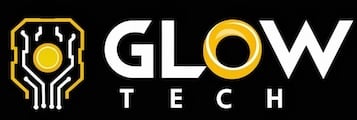
The decentralized web (Web3) alters the architecture of how applications function within online spaces, shifting away from centrally managed servers and databases to more blockchain and peer-to-peer environments. Web3 applications prioritize empowerment, transparency, and security over corporate gatekeeping and data abuse, enabling personal data ownership and online activity without the need for permission from third-party companies. As the use of decentralized apps (dApps) becomes standard, so too does the ability for enterprises and developers to dynamically and securely obtain purpose-driven data via distributed ledgers. This is why a headless CMS solution is critical due to its API-based architecture that interfaces fluidly with decentralized networks.
Headless CMS provides a flexible, simplified content management solution that works with the decentralized nature of Web3. While traditional CMS solutions rely upon centralized databases and a larger, almost all-inclusive framework, headless CMS solutions allow for a more modular approach where developers can create, manage, and push content updates dynamically across decentralized applications, blockchain platforms, and secure repositories. This article explores why headless CMS is vital for developing Web3 applications, fostering content management and distribution for effective, efficient, and scalable digital experiences in a decentralized universe.
Enabling Decentralized Content Distribution
The ability for Web3 applications to run without a central authority is one of the greatest advantages. They rely less on cloud-based offerings and typical centralized content creation and management. However, this prompts new issues as it pertains to content management and distribution in decentralized environments. Enter the headless CMS. A headless CMS can serve as a powerful content layer and integrate with decentralized storage networks like IPFS (InterPlanetary File System), Arweave, or Filecoin, allowing developers to store and source content in a completely decentralized manner. Benefits of headless CMS over WordPress become especially apparent here, as traditional CMS platforms like WordPress are not equipped to handle decentralized workflows or seamless integration with Web3 protocols.
Thus, using a headless CMS for decentralized storage allows the integrity of Web3 applications to have powerful, censorship-resistant content and storage solutions. This is because regardless of having a centralized server to pull data from, data exists across myriad nodes, giving users data permanence, additional security, and increased accessibility of content as the data exists on the blockchain and can be accessed worldwide.
In addition, a headless CMS with blockchain-based content validation systems ensures that content validity and reliability is consistent. If content is edited, it can be hashed and put on a blockchain, an immutable ledger that allows any user to authenticate where any digital asset or published work comes from, its history, and credibility.
Powering Smart Contracts with Dynamic Content
Smart contracts play a vital role in Web3 applications because they allow for automated, self-executing contracts that initiate change when conditions are met. However, smart contracts are static by nature. They cannot adjust their code once created and deployed, just like they cannot inherently pull in outside information. Therefore, decentralized applications have challenges when trying to generically update content over time.
The answer is headless CMS platforms act as content middleware that enable Web3 applications to pull and push structured content via APIs and not interfere with the original logic of the smart contract. Therefore, through decentralized oracle networks like Chainlink, Band Protocol, or The Graph, headless CMS solutions can provide dynamic, immutable content changes to ensure that the smart contracts and subsequent Web3 applications have the most relevant content over time.
For example, DeFi apps can fetch live token prices, earnings reports, or governance decisions via a headless CMS and display this information seamlessly on a Web3 front end. Similarly, NFT marketplaces and metaverse apps can call upon the metadata, listings, and other audio-visual enhancements stored in a headless CMS, ensuring that digital assets remain dynamic, engaging, and highly engrossing for the user.
These options from the Headless CMS allow such interaction to function alongside smart contracts so developers can create more seamless, adaptive, and content-focused decentralized applications instead of being tied to the more immutable aspects of a blockchain.
Enhancing User Ownership and Data Sovereignty
A critical facet of Web3 is empowering users to own their data completely, unlike the current paradigm in which centralized entities collect, store, and monetize personal identity. For instance, social media platforms, cloud-based content creation/storage, and ecommerce platforms operate as centralized intermediaries today, holding sole ownership of any created content by their users. Therefore, they subject users to data harvesting, algorithmic suppression, censorship, and data breaches. Similarly, centralized content management systems store articles, images, and user comments in warehouses that are, once again, owned by one centralized entity. This gives governments, big businesses, or hackers the accessibility to manipulate, silence, or remove content without response from the original creator.
Where are we headed here? Web3 and decentralized technologies foster an environment of user empowerment and data ownership. Thus, in a Web3 arena with blockchain-based identity management systems, decentralized storage solutions, and cryptographic permissioning, a headless CMS enables users to manage, own, and access their content independently. In the same light, headless CMSs are not hosted on cloud systems with centralized storage; a Web3-compatible headless CMS solution can utilize decentralized storage options like IPFS (InterPlanetary File System), Arweave, or Filecoin.
This implies the content is non-fungible, censorship-resistant, and accessible from anywhere globally, as long as proper permissions exist—even when a network fails, or a public-facing server obtains geo-blocking restrictions. Where centralized content ownership would be lacking is with decentralized identifiers (DIDs) and self-sovereign identity (SSI) frameworks. For instance, with a Web3-ready, headless CMS, blockchain can authenticate and validate users’ identities for logging in, etc.; a cryptographic signature tied to their actions and identity is all that’s needed—no passwords, no connections to third-party authentication needed.
Thus, users can own their identities and manage who has access to their content or the content around them instead of relying on centralized authentication service partners like Google or Facebook. Similarly, through tokenized access controls, brands and creators can monetize ownership in new ways via smart contracts over the blockchain. Gone are the days wherein media creators must create paywalls or depend upon ad revenue for payment—if payment is given at all. All of a sudden, via NFT-based licensing, token-gated content, subscription models, and microtransactions, creators can dictate how they want to get paid while simultaneously ensuring they never get watered down ownership over their work.
Therefore, in a world where decentralized authentication measures exist alongside headless CMS platforms, Web3 applications provide a more user-centric approach with greater transparency, security, and privacy. Users can manage their content, assets, sensitive information, and editorial rights without fear of corporate takeover or hidden scraping. In addition, once something is published, its ownership is validated through the blockchain, as any change, update, and sale are logged on-chain to which users can access for validation purposes and track to prevent defacement while ensuring their work has a permanent URL.
This notion aligns seamlessly with the notion of Web3’s focus on data being owned digitally, decentralization, and transparent data. Whereas, for example, traditional content management is dependent upon a centralized authority, the headless CMS solutions on Web3 enable people and brands to fully own their works with facilitated trustless, permissionless, and decentralized endeavors online. Therefore, as the decentralized web expands, headless CMS-type solutions will change the way of content creation, sharing, and ownership in an expanding Web3 world that promotes a censorship-free and user-driven experience.
Facilitating Multi-Platform Content Delivery in Web3
Web3 applications exist in the greater digital universe rather than a single application. Web3 applications exist across multiple decentralized networks including, potentially, other applications, other devices, and other blockchain structures beyond their range. Centralized applications exist similarly, tethered to specific cloud servers and within a certain realm. Therefore, when creating new Web3 applications, challenges arise about creating them across multiple networks and making them open, decentralized, and efficient for anyone, anywhere, anytime.
Where traditional monolithic CMS systems are designed to maintain a website and application that caters to a central authority—the end user, the developers, or the marketing teams—headless CMS systems are geared toward a decentralized, API-first future that allows content to be pushed to Web3-ready experiences such as decentralized social networks, crypto wallets, NFT marketplaces, DAOs, metaverses, blockchain publishing services, and Web3 identity solutions. In addition, with smart contracts and blockchain-empowered content authentication, these headless CMS systems render content verified, everlasting, and uncensored upon creation and approval to be used however, whenever, and wherever it may be consumed.
This suggests that with a headless CMS as a content hub, developers can create universally palatable, blockchain-ready experiences that live beyond the Web. A headless CMS can deliver styled content in real-time that can be retrieved and displayed across new decentralized applications. For example, a headless CMS can store and serve structured data that can be seamlessly retrieved for decentralized social applications like Lens Protocol, decentralized marketplaces on Ethereum or Solana, or 3D experiences and games created in Unreal Engine, Three.js, or WebXR.
In addition, Web3 games and NFT marketplaces require metadata that is dynamic, on-chain, and token-restricted, all of which is possible with a headless CMS. Instead of a static and centralized database storage solution as NFT metadata or in-game information, developers can rely on a headless CMS to develop, update, and serve digital information in real-time, allowing NFT titles, metadata, owners, and real-time action to change based on blockchain events.
Especially as Web3 is naturally modular and composable, enterprise and developers require hyper-scalable content management solutions. A Headless CMS enables cross-platform content syndication so businesses can manage their dApps, blockchain-based wikis, and token-gated repositories via one API-compliant solution. Essentially, content updates, branding, and metadata are on the same page and communicating across the various decentralized realms instead of accidentally fragmenting content across other established touchpoints that confuse and distract business operations.
The power to share consistent, blockchain-verified content across various Web3 arenas enhances opportunity, engagement, and exposure for a decentralized audience for which businesses would otherwise have difficulty finding and retaining an audience across various platforms. Where this differs from traditional content dissemination is that it relies upon appropriate centralized SEO rankings and proprietary CDNs to push content to the forefront while headless content management solutions rely on decentralized storage repositories such as IPFS, Arweave, and Filecoin to ensure that **content is accessible, un-censorable, and validated across the larger Web3 universe.
As the decentralized web becomes more prominent, headless CMS will play a critical role in driving seamless, cross-platform content delivery needs in blockchain applications, tokenized ecosystems, and paywall-free metaverses. Headless options are the vehicle for organized content creation and management to enable access to decentralized distribution technologies; thus, organizations, developers, and content creators can piece together scalable, user-oriented experiences to thrive in a decentralized future.
Strengthening Censorship Resistance and Content Integrity
Censorship resistance is one of Web3’s foundational elements that enable information accessibility. It’s impossible for a central authority to remove or alter all digital access points to content. However, decentralized applications may require a more extensive content distribution system to ensure proper organization and standards of information for effective engagement.
Headless content management systems create a censorship-resistant content solution when engaged by allowing companies to store and share content via decentralized file hosting systems and blockchain verification of content.
In addition, with hashed content via blockchains and cryptographic signatures, headless CMSs can guarantee integrity, authorship, and trustworthiness, so that content that is published is verifiable, translucent, and immutable. This is crucial for independent journalism, non-profit journalism, human rights efforts, and similarly decentralized educational opportunities where credibility is critical. The integration of blockchain and content verification and headless CMS in Web3 applications bolsters content legitimacy, helps fight against disinformation, and increases trust in online environments operating through decentralized channels.
Conclusion
Therefore, as the world embraces Web3, the need for decentralized, flexible, and API-based content creation and control solutions will grow. The headless CMS is part of the foundation of Web3, boasting decentralized content control, smart contract integration in real-time, user authority, cross-device content rendering, and decentralized publishing.
Thus, creating a content foundation driven by headless CMS allows Web3 products to thrive with consistency, security, and transparency-driven applications that provide adaptable and responsive solutions. Therefore, those who seek to adopt headless solutions for their content in a Web3-oriented universe will become the forebears of the new internet and content ownership with decentralized options moving forward.




